A Body of Art Subverts the Ban
Writer and performer Nusaiba Imady investigates translation, trauma, authorship, and the body in her response to the four collaborations created for Mn Artists Presents: Essma Imady
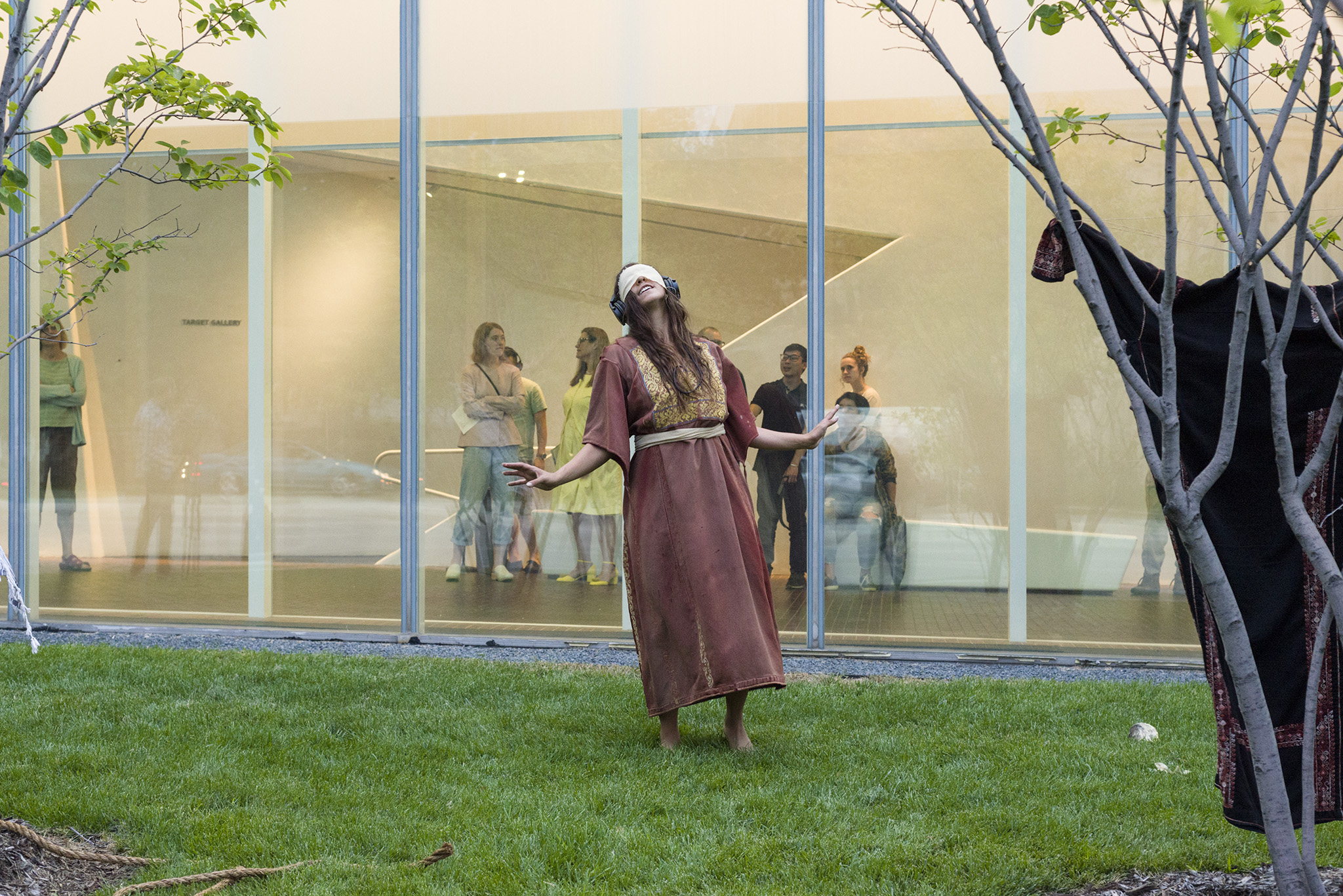
I’m a bilingual writer who primarily writes in English. The practice of creating my body of art—that is, a process of creation through which the art becomes, in itself, a separate entity from the artist—is a practice of self-translation. I modify the bending of my tongue to produce only a partiality. This process of creation separates my body of art from my corporeal self. It becomes a collaboration between two selves, neither owning the body.
Essma Imady, who is both the guest curator of Mn Artists Presents: Essma Imady and my sister, wanted to create a show that investigated these questions of translation, as well as assumptions and expectations about representation in the art world. In a zine produced for the event, Imady wrote, “I wondered what would happen if I pushed this to the extreme—if I intentionally asked artists to ‘translate’ the work of other artists who now could no longer even apply for a visa in hope of traveling to America.” Having grown up in Syria as mixed kids, we have both spent so much of our lives attempting to translate ourselves, attempting to speak for ourselves as though we were someone else. This experience gives rise to the question: How does that process look on a larger scale? What might become of our creative output when it is translated and molded by someone else? Who does the body of art belong to? How can that ownership be justified?
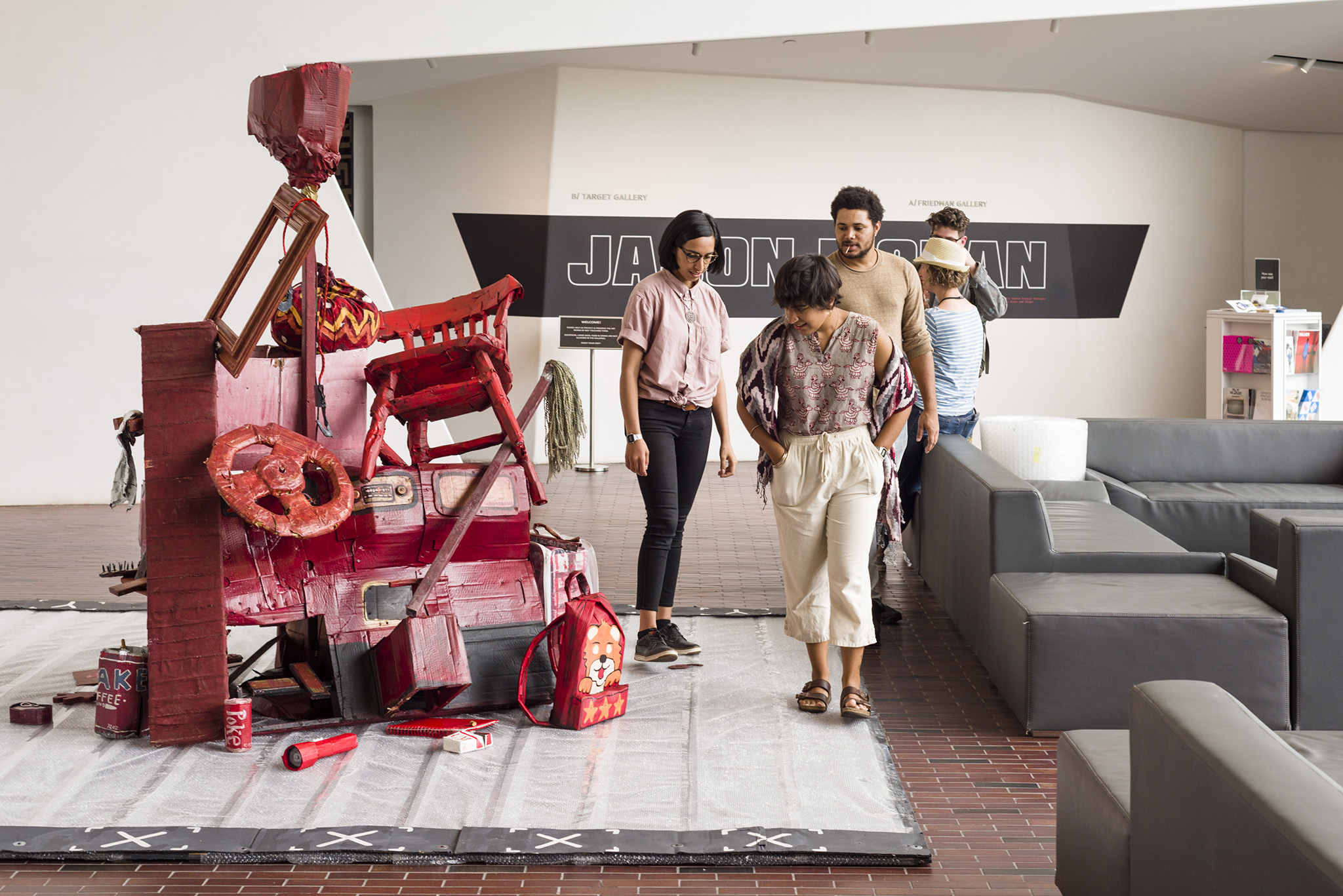
Preston Drum, one of the Minnesota-based artists who worked with a Syrian artist overseas, lamented the inability of his collaborator, Manar Zind, to physically be present with the finished sculpture. The work was inspired and directed by Zind, and fabricated and modified by Drum. X–Y is a large sculpture, one that appeared to me as a jarring, red amalgamation of chaos. It is detailed down to the brand of cigarettes on the floor, a brand favored by Syrian youth. It is an interactive sculpture: placed in the middle of a hallway, the audience cannot avoid stepping on the bubble wrap on which the sculpture is set. The work is constantly making popping noises that, in the context of the sculpture, bring to mind gunshots. The work demands that visitors step on it, engaging them in creating the echoing sounds of trauma as they try to reach the other side.
However, Zind is not a sculpture artist, rather a multimedia artist whose work tends towards the examination of public and street art. He could not have conceived of this work in this way, had it not been for his own artistic background. It is perhaps easy to say the artwork belongs to both artists, that they are both the creators, and therefore the authorship of the piece is not a complex question. This, however, cannot be true, because the body of art, the body of this sculpture, as it exists outside of both artists, is not a clear combination and collaboration. In order for Zind and Drum to work together, they had to come together through the process of translating their own experiences. It is not as simple as a hand yielding a pen to complete a dictation; rather, it a process in which two conceptually opposite existences crash, and create a body that is separate from both them.
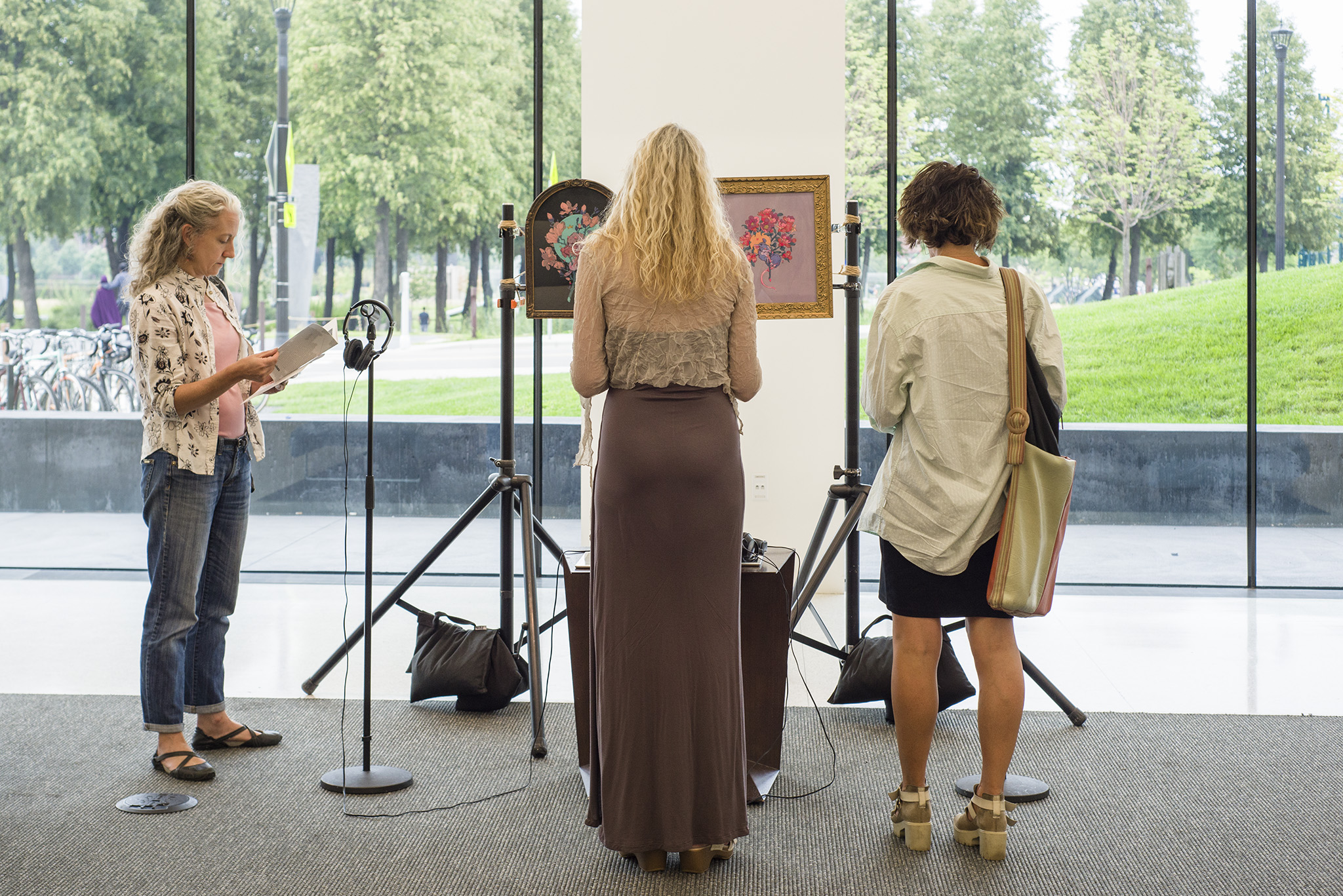
Because Drum and Zind were able to communicate and build together, it is easier to cast them as the parents of a child—the artwork—that is of both of them and neither of them. However, in the instance of Niky Motekallem, an Iranian artist based in Minnesota, and Aliaa Sukkar, a Syrian poet and songwriter based in Turkey, they never spoke—and due to language barriers, they probably would be unable to do so if they had tried. Motekallem was given a poem by Sukkar written in Arabic script, a language she does not speak. But since Arabic shares an alphabet with Farsi, Motekallem was able to parse out the sounds of the poem. It is from this experience of the poem that Motekallem illustrated The Last Time the King Held His Son. The illustration in its completion seems to me to be a morose, heart-wrenching painting depicting a mouse hanging on a sprig of flowers. The mouse is wrapped around the sprig, as though he may fall any minute. It is only the strength of his legs that keeps him from separation, as the glow of the moon behind him swallows his surroundings.
The poem Motekallem worked from, the poem that Sukkar wrote, addressed a longing for home, a missing of one’s country, a want for return. The pain and longing in both works, in which neither artist communicated with the other, presents a question: Is the language of pain one of the few things that requires no translation? It produces a body of art that exists as a healing, perhaps, for the artists, but also as a declaration of unity. Perhaps it is in this illustration that the answer of who the artwork belongs to is found. Is it the the audience? Do they bring together these two artists and make sense of the body of the art?
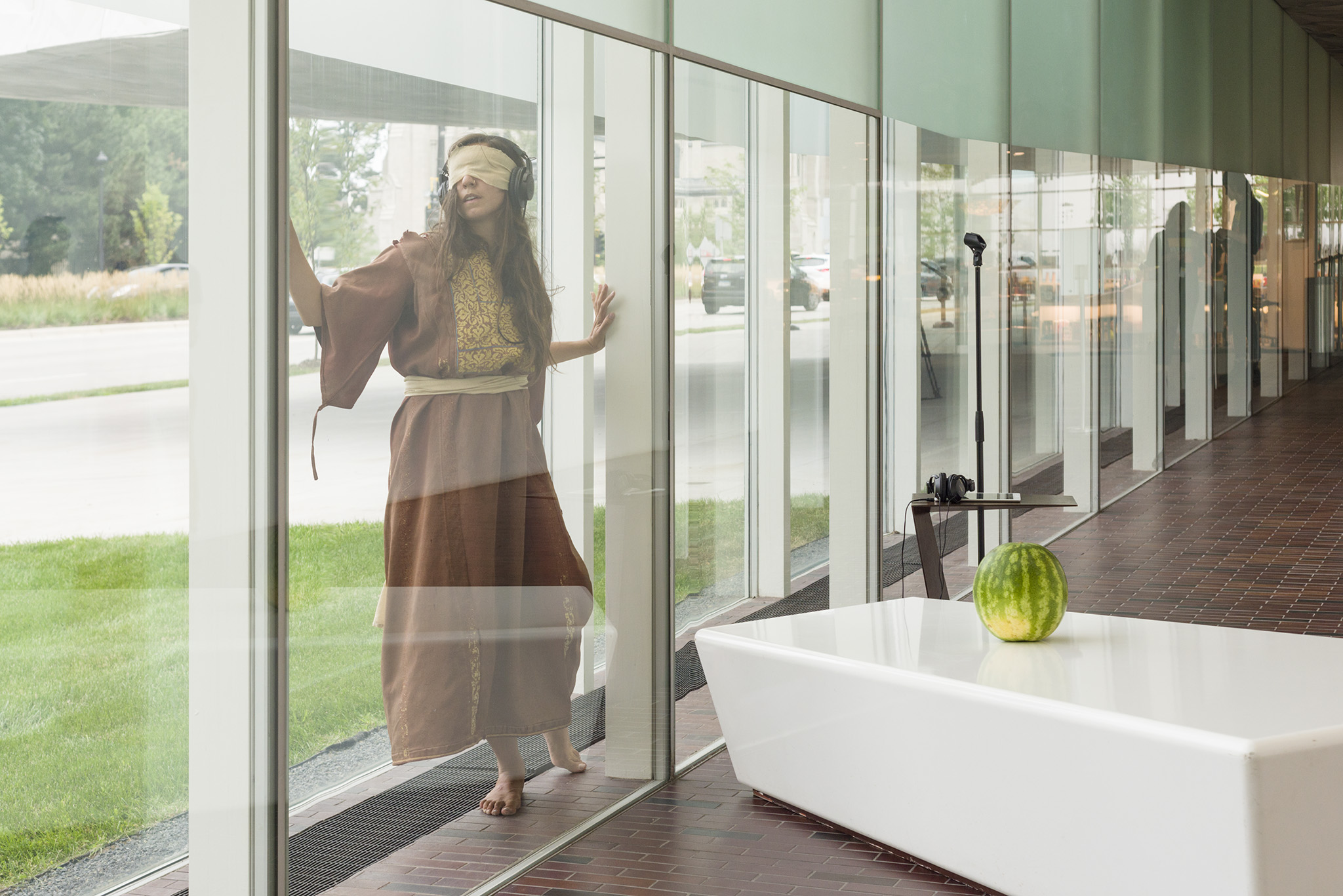
A further exploration of ownership can be found within the collaboration between Leila Awadallah and Asma Ghanem. Awadallah is a Palestinian-American dancer and artist based in Minnesota; Ghanem is an experimental musician and visual artist from Palestine. Artists from a similar origin are often expected to have the ability to speak for one another, an assumption of monolithic existence projected onto them. However, Ghanem, raised in Palestine, and Awadallah, raised in the United States, have vastly different experiences of what it means to be Palestinian. Awadallah choreographed a dance for the duration of the event, nearly four hours, based in part on the experimental soundtrack put together by Ghanem. The body of art was a literal, corporeal body: Awadallah’s physicality could be experienced by the audience; they could see her, even touch her if they had no sense of consent. On the other hand, in order for them to see Ghanem, they had to choose to put on the headphones that were positioned around the space, and experience Ghanem’s body of art through the mediation of a sound file sent digitally around the world. Awadallah and Ghanem’s artwork-child pushed against this assumption of a monolithic existence projected onto bodies of similar origin, by becoming a body of art that was neither of them, and both of them.
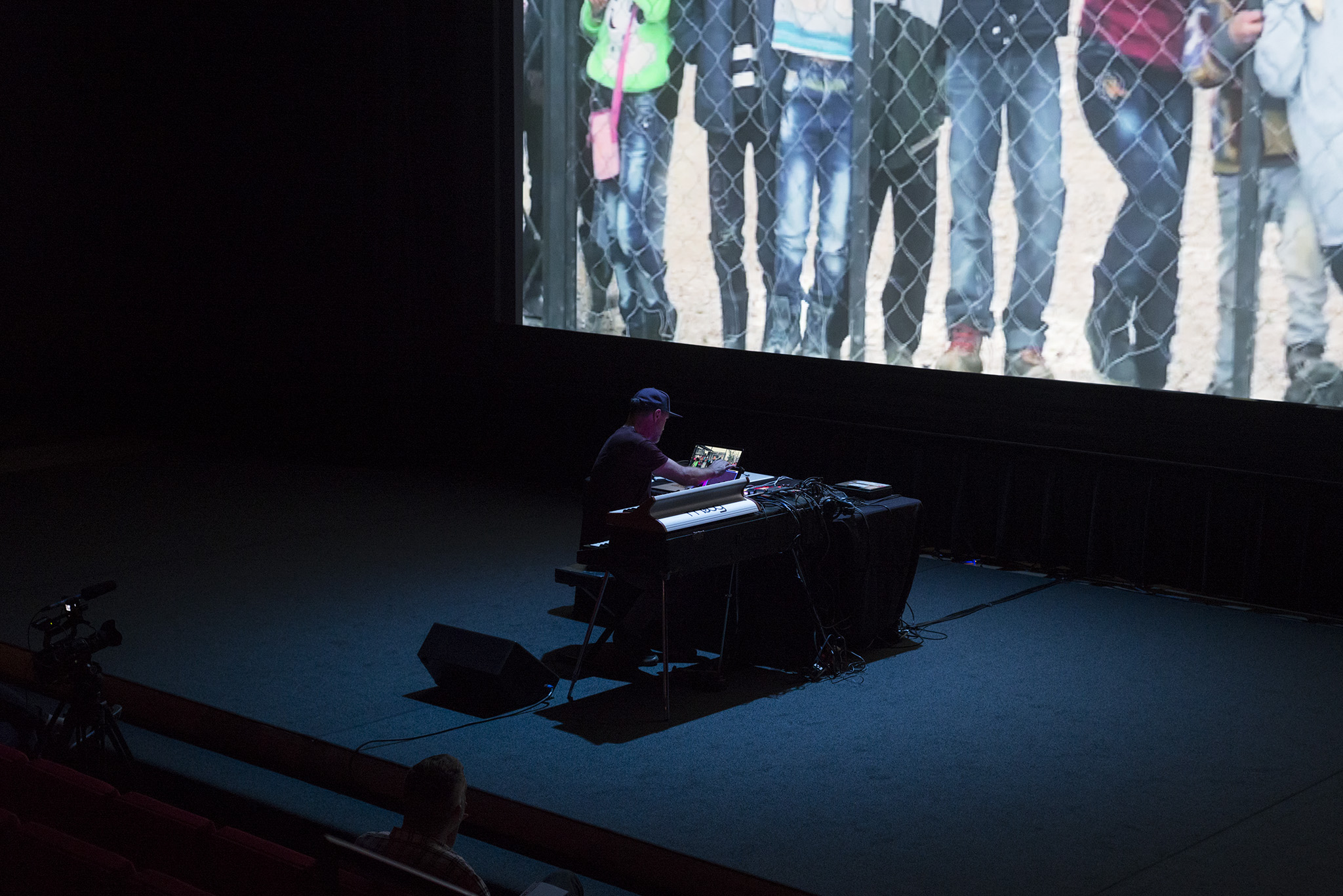
This act of choice was not given as much space in the collaboration between Khaled Alwarea and John C.S. Keston. Alwarea, a Syrian artist and activist based in France, shared with Minnesota-based artist Keston a film he had created as a translation of his trauma and PTSD experience in the aftermath of torture and arrest. Keston edited and reformatted the film Alwarea had created, and performed a live sound score during the screening. Through his editing and musical additions, he made the process of viewing the film feel like experiencing the complexity and despair of trauma. I could almost not name the trauma that resonated with me—however, the experience of it was unavoidable; it invaded the senses. In essence, it did what all the art curated in this show did: it created a body of art that was tangible to the viewer through the language of pain.
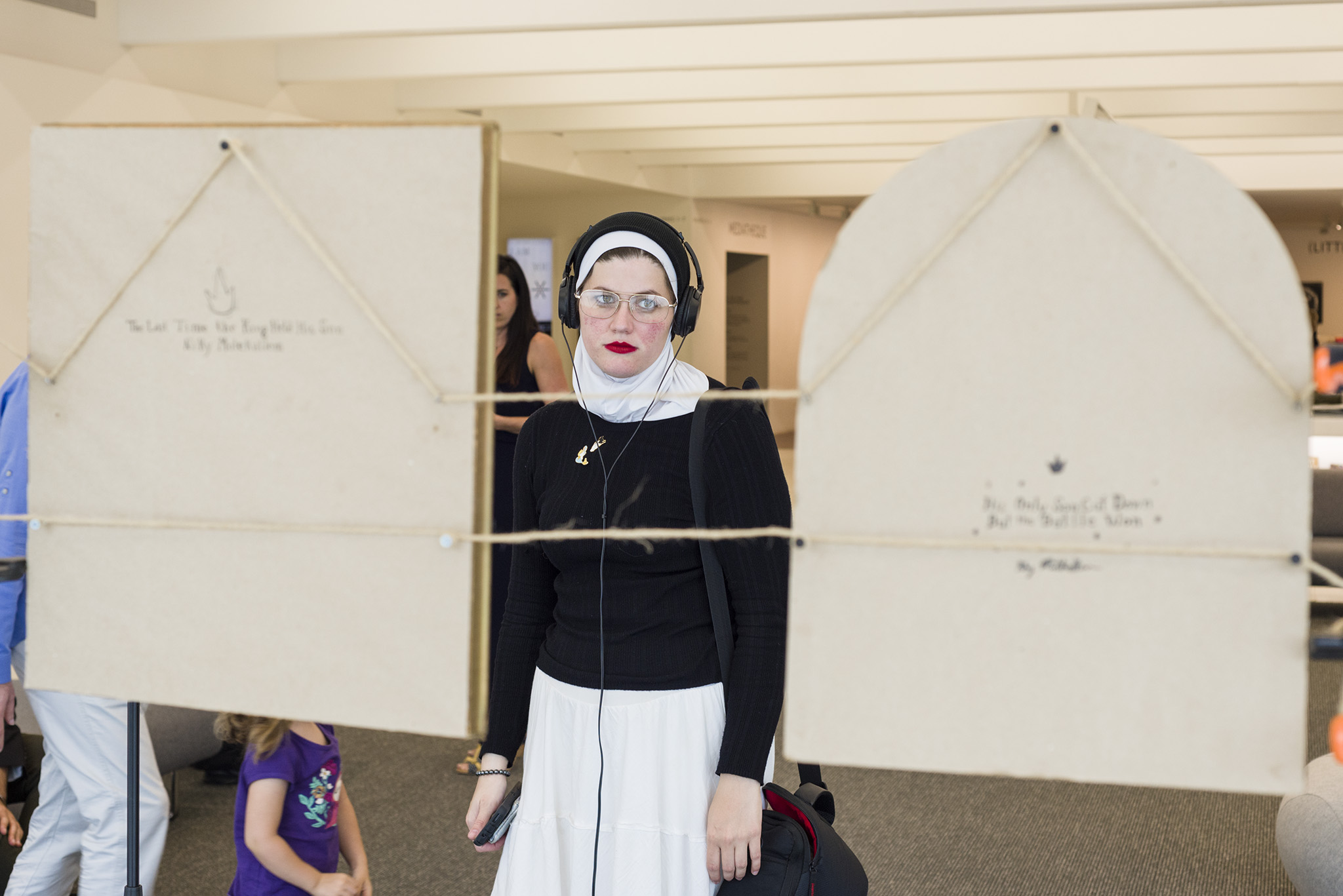
In literary circles, it has become trite to say that the Author, with a capital A, is dead—in reference, of course, to the well-known essay by Roland Barthes. This argument insists that the creator of a body of art can no longer be an authority on its existence, that it exists outside of them. The body of art in the show curated by Essma Imady is a body in multitudes, a body that is not singularly made, nor singularly experienced. The work of translation and of co-creation by the collaborating artists took on a life of its own, and in that life, it worked as a subversion of borders and travel bans. The artwork became a manifestation of the artists whose physical bodies are banned from entering this space due to political incidents. The body of art then becomes the body of a revolt. It is a body that is not merely translated from artist to artist to audience, but rather an autonomous body that demands its own presence.
This piece is a commissioned response to Mn Artists Presents: Essma Imady, which was held at the Walker Art Center on August 23, 2018.